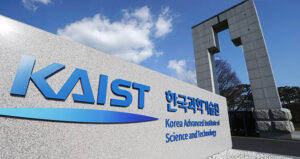Hanwha Aerospace, Korea Aerospace Industries (KAI) and LIG Nex1 are the first private aerospace companies to benefit from a public-to-private space technology transfer initiative led by KAIST, which built South Korea’s first satellite KITSAT-1 that launched in August 1992.
The program follows the May 21 summit between South Korea’s President Moon Jae-in and his U.S. counterpart Joe Biden at the White House, where they agreed to strengthen their partnership in civil space exploration, science, aeronautics research and cooperate for effective joint response against security threats in space.
Each company will pay KAIST 5-10 billion won ($4.5-9 million) in return for acquiring the technological assets they need by around 2024, said Kwon Se-jin, a professor at the Department of Aerospace Engineering at KAIST and chief of the Satellite Technology Research Center, a KAIST-associated institute in charge of the transfer.
In March, KARI declared it would stop developing 500-kilogram-class satellites by 2025 at the latest, selecting KAI as its successor to lead the category.
According to Kwon, Hanwha Aerospace wants technologies needed to develop laser inter-satellite links (LISLs), a laser-based data relay technology enabling satellites to transfer communications from one spacecraft to another, either in the same orbital plane or an adjacent plane.
He said 10 Starlink satellites launched to polar orbit Jan. 24 feature the technology.
Hanwha plans to apply LISLs to a constellation of 2,000 satellites it is building for low Earth orbit deployment by 2030, providing connectivity to urban cargo-delivery drones and passenger airplanes.
While KAI looks for technologies needed to develop power systems for small satellites and ground stations, LIG Nex1 wants technologies for nanosats, he said.
“The transfer [of technologies] will be done through joint research and development between KAIST and the companies, not just sharing documents, because it’s not something they can acquire only with documents,” Kwon said.
“KAIST has accumulated technologies spending taxpayers’ money for over 30 years. It’s time for us to pay back.”
110 small public satellites
With the transferred technologies, Kwon said the three companies will “play a key role in fulfilling the government’s mission of launching 110 small public satellites by 2031.”
This mission was recently added to the government’s space development road map by the National Space Committee, a policymaking body.
“The launch [of 110 public satellites] is to nurture the domestic satellite market with demand on the public side,” Science and ICT Minister Lim Hye-sook told reporters June 9, announcing the revised road map.
“An increased demand [for satellites] on the public side will set the stage for more private companies to join the market and ensure their stable growth.”
According to the science ministry’s news release, the planned 110 small satellites include 60 reconnaissance satellites for national security, 14 communications satellites to test 6G broadband internet and 22 observation satellites to monitor space weather.
Five satellites aim to demonstrate technologies for space debris removal and other in-orbit services, which will be “fully commercialized in 10 years,” according to the document. It did not contain detailed information such as specific timelines, budgets and developers.
Kwon said KAIST is “ready to support” companies interested in the satellite business.
With expectations that more companies would seek KAIST’s help, the university’s Satellite Technology Research Center is planning to launch a 17-month intensive training program for 10 satellite engineers.
Kwon said KAIST is refocusing on “long-term missions that private companies can’t afford” as the organization looks to unload satellites from its development portfolio.
“Among technologies we are going to explore include ones needed for space rendezvous, exploration of the Van Allen radiation belt and asteroids,” he said.
“Space rendezvous technology could be applied to making spacecraft for space debris removal.”



